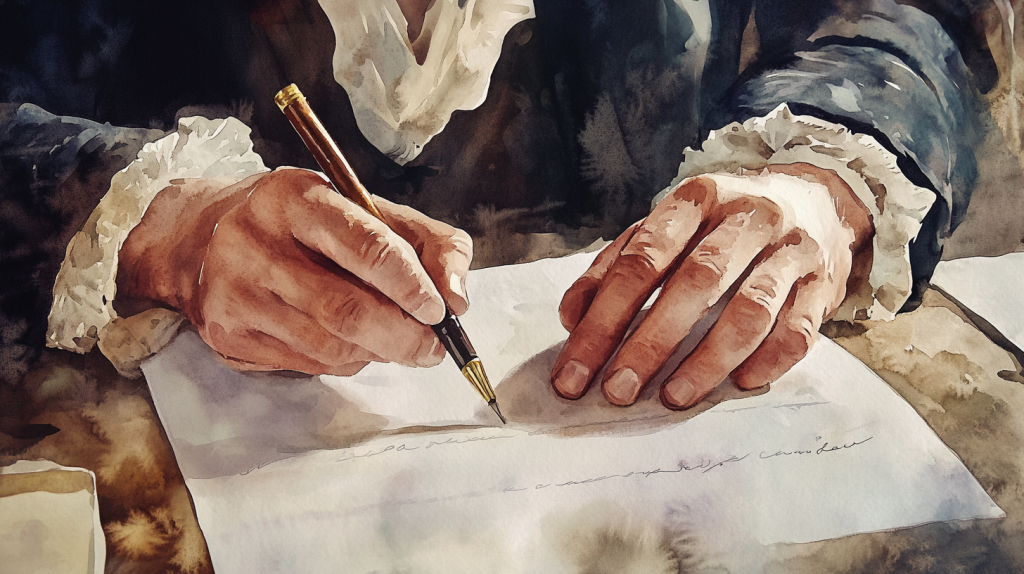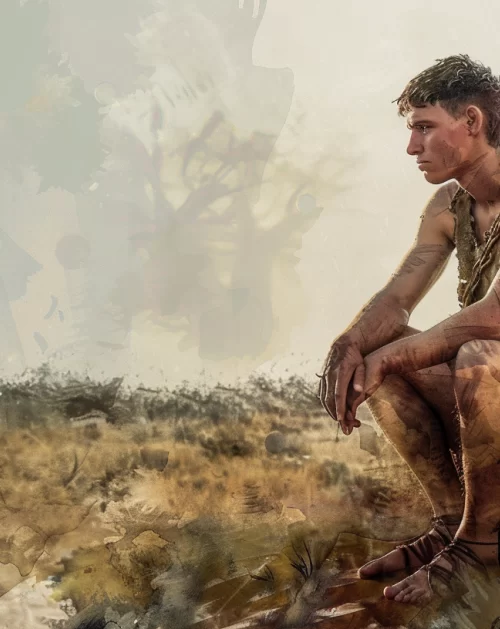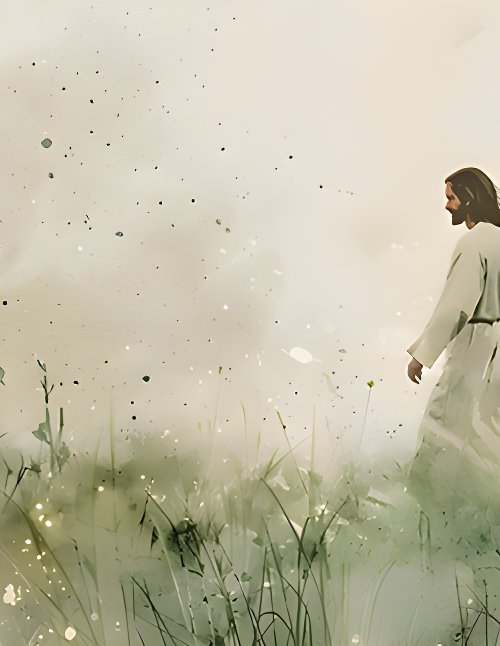
In this article, weʻll be deep diving into Doctrine and Covenants 20-22. To download our free lesson help + customizable Canva Template, click here: https://otherthanamom.myflodesk.com/dandc27-28

I take the sacrament in remembrance of Jesus Christ.
Engaging Questions:
- What do you think it means to take the sacrament “in remembrance” of Jesus Christ (Doctrine and Covenants 27:2)? How do you personally try to remember Him during the sacrament?
- How does the sacrament help you feel closer to the Savior each week?
- Have you ever had a sacrament experience that felt especially meaningful? What made it stand out?
- Doctrine and Covenants 27:2 says it doesn’t matter what we eat or drink during the sacrament, but how we prepare our hearts. How can you better prepare spiritually for the sacrament?
- Why do you think Jesus Christ chose simple symbols like bread and water to help us remember Him?
- How does renewing your baptismal covenants during the sacrament help you throughout the week?
- What do you think about during the sacrament that helps you focus on the Savior’s sacrifice?
- How can understanding the sacrament as a personal connection with Christ change the way you experience it?
- What role does repentance play in making the sacrament a more powerful experience for you?
- What is one thing you can do this week to better prepare yourself to take the sacrament with more gratitude and focus?
Object Lessons:
1. The String Around the Finger (A Reminder of Jesus Christ)
Materials:
- A piece of string or ribbon for each participant
Lesson Overview:
Give everyone a small string to tie around their finger. Explain that people used to tie a string around their finger to remember something important. Compare this to how the sacrament is a weekly reminder of Christ’s Atonement and His role in our lives.
Discussion Points:
- Why is it important to have regular reminders of Jesus Christ?
- How does the sacrament help you remember what Christ has done for you?
- What other ways can we remember Him throughout the week?
2. The Photo or Keepsake (Remembering Someone Special)
Materials:
- A photo or keepsake (such as a family heirloom or meaningful object)
Lesson Overview:
Hold up the photo or keepsake and explain how it helps you remember someone you love. Then compare this to the bread and water of the sacrament, which help us remember the Savior. The object helps you feel close to someone, just like the sacrament helps us feel close to Christ.
Discussion Points:
- How does the sacrament help us feel connected to Jesus Christ?
- How is remembering Him during the sacrament like cherishing a keepsake?
- Why is it important to not just remember, but to act on what we remember?
3. The Name Tag (Taking His Name Upon Us)
Materials:
- Blank name tags or labels
- Markers
Lesson Overview:
Have everyone write “Disciple of Jesus Christ” or “Remember Him” on their name tag. Explain that when we partake of the sacrament, we are renewing our covenant to take His name upon us. Just like wearing a name tag identifies us, the sacrament reminds us to live as representatives of Christ.
Discussion Points:
- What does it mean to take His name upon you each week?
- How can we show others during the week that we have remembered Jesus Christ?
- What actions would help you be a better disciple of Christ after the sacrament?
4. The Recharging Device (Weekly Spiritual Recharge)
Materials:
- A phone or device and a charger
Lesson Overview:
Show a phone running low on battery. Plug it into the charger and explain that just like a phone needs to be recharged regularly, we need to spiritually recharge by remembering Christ each week. The sacrament is like a spiritual battery boost, reminding us of His love and sacrifice so we can move forward with renewed strength.
Discussion Points:
- Why do we need a weekly spiritual recharge?
- How does remembering Christ during the sacrament help us during the rest of the week?
- What can we do to make the sacrament feel like a powerful spiritual renewal?
5. The Mirror (Reflection and Self-Examination)
Materials:
- A mirror
Lesson Overview:
Have participants look into a mirror and reflect silently. Explain that the sacrament is a moment to reflect on ourselves and our relationship with Jesus Christ. Just as a mirror helps us see our physical appearance, the sacrament helps us spiritually check in and recommit to following Christ.
Discussion Points:
- What does the sacrament help you reflect on personally?
- How does self-reflection during the sacrament help you remember Him more deeply?
- How can we prepare ahead of time to have a more meaningful sacrament experience?
6. The Broken Bread (Symbol of His Sacrifice)
Materials:
- A small loaf of bread (or a roll)
- A knife or hands to break the bread
Lesson Overview:
Break the bread in front of the group and explain how the broken bread represents the broken body of Jesus Christ. Relate it directly to the sacrament prayers. Help participants connect that when we see and partake of the broken bread, we are actively remembering His sacrifice.
Discussion Points:
- How does seeing and partaking of broken bread help you remember Christ’s Atonement?
- How can we be more focused and reverent during the sacrament?
- What blessings come when we truly remember Him during this ordinance?
Personal Sharing Prompts:
- Think of a time when taking the sacrament felt especially meaningful to you. How did you feel the Savior’s love as you remembered Him?
- Think of a time when you were going through a trial, and the sacrament brought you peace and renewed strength. How did focusing on Christ during the ordinance help you?
- Think of a time when you prepared more intentionally for the sacrament during the week. How did that preparation change your experience on Sunday?
- Think of a time when you felt forgiven and renewed while partaking of the sacrament. How did remembering Jesus Christ help you feel closer to Him?
- Think of a time when you taught or learned about the sacrament in a class or family setting. How did that discussion deepen your understanding of its purpose?
- Think of a time when you were prompted to make a change in your life while partaking of the sacrament. How did that moment help you strengthen your commitment to follow Christ?
- Think of a time when you felt the Spirit testify of the Savior’s Atonement during a sacrament meeting. How did that experience help you worship more fully?
- Think of a time when you took the sacrament after a difficult week and felt peace return to your heart. How did focusing on Christ’s sacrifice help lift your burdens?
- Think of a time when you helped a child or new member understand the importance of the sacrament. How did teaching them help you remember the sacredness of the ordinance yourself?
- Think of a time when you felt the Savior’s invitation to “always remember Him” more personally during the sacrament. How did that feeling influence your actions or mindset in the days that followed?
The Lord gives His servants priesthood keys to direct His work.
Engaging Questions:
- What do you think priesthood keys are, and why are they essential in directing the Lord’s work?
- What do you learn from Doctrine and Covenants 28:6–7 about how the Lord gives instructions to His Church through priesthood keys?
- How does it help you to know that the Lord directs His Church today through living prophets who hold priesthood keys?
- Why do you think the Lord established priesthood keys as part of the way His work is organized and carried out?
- What experiences have you had where you felt blessed because of the direction or guidance of priesthood leaders?
- How does understanding priesthood keys help you sustain and follow Church leaders with greater faith?
- What does Doctrine and Covenants 27:12–13 teach you about how the Lord restored priesthood keys in the latter days?
- How can you recognize when Church leaders are acting under the direction of priesthood keys?
- Why is it important to follow the proper order the Lord established for receiving revelation for the Church, as explained in Doctrine and Covenants 28?
- What can you do to show more support and appreciation for those who hold priesthood keys in your ward or stake?
Object Lessons:
1. The Key and the Lock (Priesthood Authority Unlocks God’s Work)
Materials:
- A key and a lock (or a locked box)
Lesson Overview:
Hold up a key and a lock. Explain that the key represents priesthood keys, which unlock the ability to perform sacred ordinances and direct God’s work. Without the key, the lock stays shut. Only those with the proper keys (prophets, apostles, bishops, etc.) can open the way for the Lord’s work to move forward.
Discussion Points:
- Why are priesthood keys essential to direct the Church?
- Who holds priesthood keys today?
- How does knowing about priesthood keys help us trust in God’s chosen leaders?
2. The Construction Site (Authority to Direct the Work)
Materials:
- A toy construction site or picture of a worksite
- A construction manager’s hard hat or a toy figure
Lesson Overview:
Explain that on a construction site, many workers have tools and skills, but the construction manager directs the work. Without someone to organize and authorize tasks, the project would fall apart. Priesthood keys are like the manager’s authority to coordinate and guide God’s work on earth.
Discussion Points:
- How is God’s Church organized like a construction project?
- Why is it important that someone directs the work through priesthood keys?
- How do we benefit when we follow those who hold divine authority?
3. The Remote Control (Who Has the Power to Guide?)
Materials:
- A remote control and a TV or toy vehicle
Lesson Overview:
Hold a remote control and explain that whoever has the remote has the power to guide the vehicle or TV. Without the right person holding the remote, the object won’t move correctly. Similarly, priesthood keys are spiritual authority that allow God’s servants to direct His work according to His will.
Discussion Points:
- Why is it important that only certain people hold priesthood keys?
- How does following those with keys help the Church function in order?
- How does this relate to our local leaders like bishops or stake presidents?
4. The Map and the Compass (Priesthood Keys Guide the Journey)
Materials:
- A map and a compass (or GPS on a phone)
Lesson Overview:
Explain that a map gives direction, but without a compass or GPS, we may head in the wrong way. Priesthood keys are like the compass—they help leaders direct God’s work in the right direction. Even if we all have faith and talents, we still need those who hold keys to guide us safely.
Discussion Points:
- How does the compass represent priesthood keys guiding the Church?
- Why can’t the Church move forward without divinely appointed leadership?
- What blessings come from trusting modern-day prophets and leaders with keys?
5. The Traffic Light (Priesthood Keys Bring Order and Safety)
Materials:
- A picture of a traffic light or toy traffic light
Lesson Overview:
Show the traffic light and explain how traffic flows smoothly when people follow its signals. Without it, there would be chaos and accidents. Priesthood keys are like spiritual traffic signals, bringing order and direction to the Lord’s work to ensure everyone is safe and progressing in unity.
Discussion Points:
- What would happen if people ignored the traffic light?
- How do priesthood keys help keep the Church and its ordinances functioning safely and orderly?
- How can we show support and sustain those who hold keys?
6. The School Principal (Delegated Authority)
Materials:
- A picture of a principal and teachers or a school building
Lesson Overview:
Explain that in a school, many teachers help students, but the principal has the authority to oversee and make big decisions. In the Church, many hold the priesthood, but only those with priesthood keys have the authority to preside and make official decisions on behalf of the Lord.
Discussion Points:
- Why do leaders need authority to make decisions in the Church?
- How do priesthood keys help the Church stay aligned with God’s will?
- How can we support those who preside with priesthood keys?
Personal Sharing Prompts:
- Think of a time when you followed the inspired counsel of a bishop, stake president, or other priesthood leader. How did you feel the Lord guiding His work through that leader?
- Think of a time when you received a calling or release from someone holding priesthood keys. How did you see the Lord’s hand in that decision?
- Think of a time when a priesthood leader provided counsel or a blessing that brought you clarity or peace. How did that experience strengthen your testimony of priesthood authority?
- Think of a time when you saw priesthood leaders work together to serve and bless a ward or community. How did that unity help you recognize that they were guided by the Lord’s keys?
- Think of a time when you felt the Spirit strongly while sustaining a leader who holds priesthood keys. How did that moment confirm your testimony of how the Lord directs His Church?
- Think of a time when you witnessed a leader act with humility and inspiration while directing the Lord’s work. How did their example help you better understand the sacred responsibility of priesthood keys?
- Think of a time when you learned about the Restoration of priesthood keys through Joseph Smith. How did that knowledge increase your appreciation for how the Lord organizes and directs His Church?
- Think of a time when you were involved in Church councils or decision-making led by someone with priesthood keys. How did that experience help you see the importance of revelation in leadership?
- Think of a time when you saw someone accept or extend a calling under the direction of priesthood keys, and it blessed lives. How did that moment build your testimony of how Christ directs His work?
- Think of a time when you trusted in the Lord’s timing and organization through His appointed leaders. How did that trust bring you peace and strengthen your faith in the structure of His Church?
The armor of God helps me stand against evil.
Engaging Questions:
- What does the “armor of God” symbolize to you, and how can it help you stand against evil influences? (see Doctrine and Covenants 27:15–18)
- Which piece of the armor of God (truth, righteousness, faith, etc.) do you feel you need most right now, and why?
- How have you personally felt protected by “spiritual armor” in a challenging or tempting situation?
- What does it mean to you to “take upon you the whole armor of God” instead of just one or two pieces?
- How can you strengthen your spiritual defenses every day? What small actions can help you “put on” the armor of God?
- Why do you think Paul and modern revelation use armor as a symbol for spiritual protection? What makes it a powerful image?
- How does wearing the “helmet of salvation” or wielding the “sword of the Spirit” apply to challenges you face today?
- How can prayer and scripture study help you strengthen your spiritual armor?
- Have you ever seen an example of someone else standing firm against evil by relying on their spiritual armor? What did you learn from them?
- What is one piece of the armor of God you want to focus on strengthening this week, and how will you do it?
Object Lessons:
1. The Armor of God Object Lesson (Literal Visual)
Materials:
- A set of props (cardboard or paper cutouts) representing each piece of armor (helmet, shield, breastplate, belt, sword, shoes)
- Labels for each: truth, righteousness, faith, salvation, the Spirit, and peace
Lesson Overview:
As you introduce each piece, place it on a volunteer or a mannequin, explaining what it represents in Ephesians 6 and Doctrine and Covenants 27. Explain how each piece protects spiritually against Satan’s attacks (temptation, fear, doubt).
Discussion Points:
- How do each of these pieces help protect us spiritually?
- Which part of the armor do you feel you need to strengthen in your life?
- Why is it important to put on all the pieces, not just some?
2. The Water Balloon and Umbrella (Spiritual Shield)
Materials:
- Water balloon or ball
- An umbrella (or large shield-like object)
Lesson Overview:
Toss the water balloon toward someone holding the umbrella. The umbrella deflects the attack, representing how the shield of faith protects us from the adversary’s “fiery darts.” Without the umbrella (faith), we would get spiritually “soaked” by temptations.
Discussion Points:
- What are some modern-day fiery darts we face (temptations, lies, discouragement)?
- How does faith in Christ deflect or minimize these attacks?
- How can we strengthen our “shield of faith”?
3. The Sponge vs. The Raincoat (Absorbing vs. Resisting Evil)
Materials:
- A sponge
- A raincoat or water-resistant jacket
- A spray bottle of water
Lesson Overview:
Spray both the sponge and the raincoat. The sponge absorbs the water (representing someone spiritually unprotected), while the raincoat repels it (representing someone who wears the armor of God). Explain that without spiritual protection, we absorb negative influences easily.
Discussion Points:
- What happens when we face temptation without preparation?
- How does daily prayer, scripture study, and righteousness act like a spiritual raincoat?
- How can we “put on” this armor before temptation comes?
4. The Sports Gear Analogy (Being Prepared for Battle)
Materials:
- A sports helmet, pads, or cleats (or pictures of them)
Lesson Overview:
Ask: “Would you play football or hockey without protective gear?” Show the gear and explain that just like an athlete wears protective equipment, we must wear the armor of God in spiritual battles.
Discussion Points:
- What happens when someone goes into a physical battle without gear?
- How is daily spiritual preparation like putting on sports equipment?
- What is one habit you can work on this week to better “armor up”?
5. The Building Block Tower (Strong Foundation Needed)
Materials:
- Building blocks
- Labels for each block (truth, righteousness, faith, etc.)
Lesson Overview:
Build a tower, labeling each block with a piece of the armor of God. Then remove one or two blocks and show how the tower becomes unstable. Explain that spiritual protection is incomplete without the whole armor.
Discussion Points:
- What happens when we neglect certain pieces of spiritual armor?
- Which “block” do you sometimes forget to include in your life?
- How does the full armor of God make us spiritually strong and balanced?
6. The Candle and the Glass Jar (Protection from Outside Forces)
Materials:
- A lit candle
- A glass jar
- A fan or someone blowing air
Lesson Overview:
Light the candle and have someone blow on it—the flame flickers or goes out. Now place the glass jar over it and try again—the flame is protected. The jar is like the armor of God, protecting your spiritual light from the winds of temptation, peer pressure, and negativity.
Discussion Points:
- How do we protect our spiritual light from being extinguished?
- Why is spiritual protection needed every day?
- How can we be better at shielding ourselves and others from evil influences?
Personal Sharing Prompts:
- Think of a time when you faced a temptation or difficult situation and felt spiritually protected. How did putting on the “armor of God” help you stand strong?
- Think of a time when prayer or scripture study helped you resist negative influences. How did those habits serve as spiritual armor in your life?
- Think of a time when you made a courageous choice to stand up for what’s right, even when it was hard. How did you feel the Lord’s protection in that moment?
- Think of a time when wearing the “helmet of salvation” (confidence in your divine identity) helped you stay focused on your values. How did knowing who you are as a child of God strengthen you?
- Think of a time when the “shield of faith” helped you overcome fear, doubt, or criticism. How did your faith in Christ give you the courage to move forward?
- Think of a time when you felt the need to strengthen your spiritual defenses. How did building your testimony and practicing gospel habits help you feel more protected?
- Think of a time when you felt like you were in a spiritual battle, but the Lord provided the strength to endure. How did relying on His power help you stay safe from harm?
- Think of a time when you taught or learned about the armor of God in a way that made it feel personal and practical. How did applying that lesson help you in daily life?
- Think of a time when someone else’s example of spiritual strength inspired you. How did they show you what it means to be fully armed with righteousness and truth?
- Think of a time when you realized that putting on the whole armor of God is a daily effort. How has this habit of spiritual preparation blessed you over time?
Why was a mission to the Lamanites significant?
Engaging Questions:
- Why do you think the Lord commanded missionaries to go specifically to the Lamanites (Native Americans) in Doctrine and Covenants 28:8–9?
- How does the Book of Mormon help us understand why the Lamanites were a focus of early missionary work?
- What does this early mission teach us about God’s desire to gather scattered Israel and fulfill His covenants?
- Why do you think it was important for the early Saints to preach the gospel to all people, including the descendants of the Lamanites?
- What does this mission tell you about God’s love for all His children, regardless of background or culture?
- How did the early missionaries’ willingness to go to the Lamanites set an example for modern-day missionary work?
- What challenges do you think the early missionaries faced as they traveled to share the gospel with the Lamanites? How can their courage inspire you today?
- How can we apply the principle of seeking out all of God’s children today, even those who might feel overlooked?
- What does this mission teach you about fulfilling prophecy and God’s long-term purposes for different groups of people?
- How can understanding the significance of this mission motivate you to be more involved in sharing the gospel today?
Object Lessons:
1. The Missing Sheep (Gathering the Lost)
Materials:
- A small stuffed animal or paper sheep
- A group of participants
Lesson Overview:
Hide the sheep somewhere in the room. Explain that like the Lamanites, there were people separated from the fold who needed to be gathered. Have participants search for the lost sheep. Once found, explain that the early mission to the Lamanites was part of the gathering of Israel, fulfilling promises that the gospel would be brought to all nations, including the descendants of Lehi.
Discussion Points:
- Why is it important to reach out to all of God’s children?
- How does this mission relate to the gathering of Israel?
- How can we apply this by seeking out those who feel “lost” today?
2. The Map and the Outskirts (Reaching Beyond the Center)
Materials:
- A map with a center (Zion/Kirtland) and outer areas marked (e.g., Missouri, Native American territories)
Lesson Overview:
Show the center area of the map and ask where most early missionary efforts had been focused (close to Kirtland/Ohio). Then point to the distant lands (where the Lamanites lived). Explain that this mission was significant because it showed that the Lord’s work was about reaching beyond the familiar places to fulfill ancient promises.
Discussion Points:
- Why do you think it was significant to go beyond the early Church centers?
- What does this teach us about the scope of missionary work?
- How does this reflect God’s desire to gather people globally?
3. The Forgotten Invitation (God Remembers All His Children)
Materials:
- A stack of invitations or envelopes
- One envelope purposely left aside
Lesson Overview:
Pass out the invitations but “forget” one envelope. Then pause and say, “Wait, we forgot someone important.” This object lesson shows that God hadn’t forgotten the Lamanites. Their inclusion in the early missionary efforts was a fulfillment of prophecies that the gospel would be taken to the remnant of the House of Israel (see 1 Nephi 13:39-41).
Discussion Points:
- What does this teach us about how God remembers everyone?
- Why is it meaningful that this mission was prioritized so early in Church history?
- How can we apply this by remembering those who might feel left out today?
4. The Puzzle and the Missing Piece (Completing the Gathering)
Materials:
- A puzzle with a piece labeled “Lamanites” or “House of Israel”
Lesson Overview:
Begin assembling the puzzle but leave out one crucial piece. Explain that the gathering of Israel was like putting together a puzzle, and the mission to the Lamanites represented a major piece of prophecy and restoration. It completed part of the Lord’s plan to restore the fullness of the gospel to all the tribes of Israel.
Discussion Points:
- Why do you think the Lamanites were key to the Lord’s gathering work?
- How did this early mission connect with Book of Mormon prophecies?
- How does missionary work today continue to “complete the puzzle”?
5. The Prophecy Fulfilled (Scripture and Action)
Materials:
- A copy of the Book of Mormon
- A printed scripture from 2 Nephi 3 or 3 Nephi 21, where it speaks of the gospel being brought back to the descendants of Lehi
Lesson Overview:
Read the prophecy about the gospel going to the descendants of Lehi. Then explain that when Joseph Smith sent missionaries to the Lamanites, it was evidence that prophecy was coming true in real time. This made it historically and spiritually significant.
Discussion Points:
- Why is it powerful when we see prophecies fulfilled in the Lord’s timing?
- How does this mission show that the Book of Mormon and Restoration are connected?
- What does this teach us about God’s faithfulness to His promises?
Personal Sharing Prompts:
- Think of a time when you felt inspired by the idea of gathering Israel or fulfilling a prophecy. How did that experience help you see the importance of missionary work, such as the mission to the Lamanites?
- Think of a time when you participated in or witnessed missionary work that felt like part of a larger, divine purpose. How did recognizing God’s hand in the work inspire you?
- Think of a time when you learned about the promises made to the descendants of the Lamanites. How did understanding those promises help you appreciate the significance of reaching out to them?
- Think of a time when you saw the fulfillment of a prophecy or scripture in your life or the life of someone else. How did witnessing prophecy fulfilled strengthen your testimony of God’s plan?
- Think of a time when you taught or learned about the gathering of Israel. How did that knowledge help you view missionary work—especially to descendants of the Lamanites—as a vital part of God’s work?
- Think of a time when you or someone you know shared the gospel with someone whose ancestors are part of the house of Israel. How did that experience help you feel the importance of restoring blessings to God’s covenant people?
- Think of a time when you saw the gospel bring hope, healing, or identity to a specific community or family. How did that example help you understand the significance of early missions like the one to the Lamanites?
- Think of a time when you studied how early missionaries, like Oliver Cowdery and others, faithfully fulfilled the Lord’s command to go to the Lamanites. How did their sacrifice inspire you to trust the Lord’s timing and purposes?
- Think of a time when you learned that God remembers all His children and fulfills His promises. How did that experience help you understand why missions to groups like the Lamanites are sacred and significant?
- Think of a time when you recognized how sharing the gospel helps fulfill ancient covenants. How did participating in or supporting that work help you feel part of God’s eternal plan?



